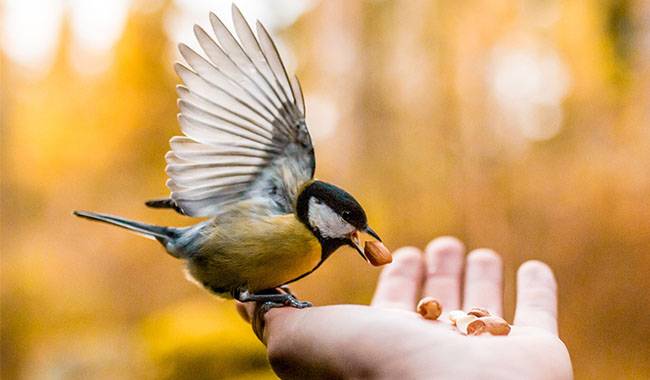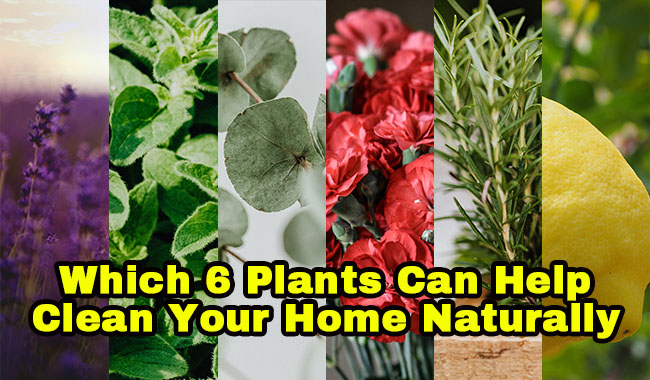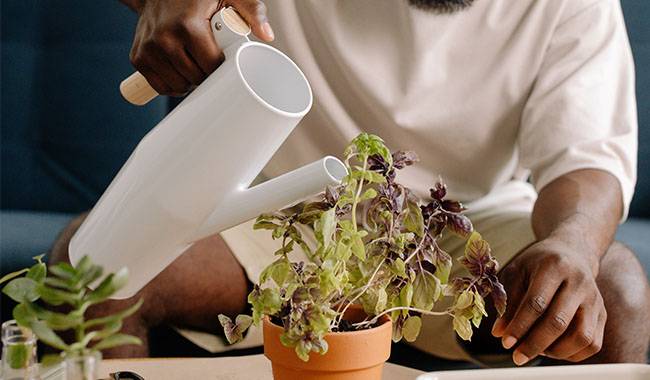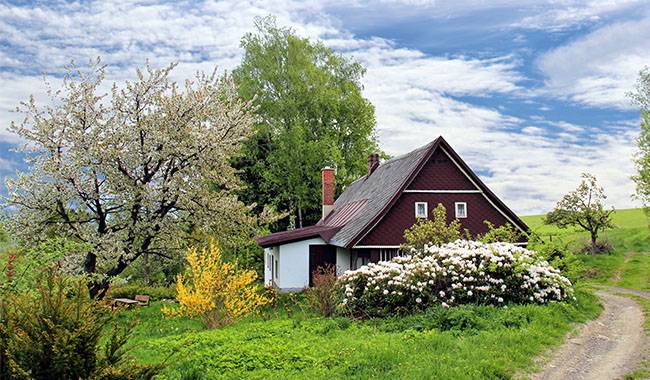
While I already had extensive experience growing vegetables and ornamentals on my parents’ land, we had our own cottage. However, this did not save me from the many mistakes I made while growing a garden and vegetable garden (garden beginners).
In this case, we were forced to sell our first cottage and move to a new location. Before I start managing the new garden, I would like to analyze my past cottage mistakes.
I hope that my experience will be useful for ThumbGarden’s readers because it’s good to learn from other people’s mistakes.
Choosing a villa for winter
The first mistake was already made when buying our first cottage. As spring approached, we started to get the “itch”, as the gardeners say, to buy our own gite as soon as possible.
In February, we visited several plots, only one of which appealed to us. And in March, we were already the owners of our own villa.
Of course, during this period there was still snow on the ground, which prevented us from objectively assessing all the advantages and disadvantages of the villa.
For example, half of the seven current trees that delighted me at the time of the visit were old and no longer bearing fruit, and the other half were dead. Therefore, not only did we have to buy new seedlings, but we also had to spend time clearing out the old berry bushes.
In addition to the characteristics of the vegetation, the snow can hide many unpleasant surprises. It often even happens that the owner of a heavily overgrown area trims all the weed trimmers and numerous stumps are completely invisible under the snow.
And in spring, the new owner is given a plot of land covered with cherry and plum shoots, from which it is very difficult to get rid.
Choose a “bare” area
A site without large trees and shrubs seems to be a plus for many people, after all, it allows you to plan your design independently without having to cut down old specimens and deal with tree branches. In addition, it provides ample space for sun-loving crops.
But an empty plot is not necessarily an advantage. And on such a site, where you live under the eyes of your neighbors and in windy weather there can be a very strong wind trend, it’s not so much. The reason for the lack of woody vegetation is often more serious than the previous owner’s dislike of trees.
The lack of trees on a new lot makes sense, but the scarcity of vegetation in a large house of an association founded more than 30 years ago should be shocking.
In our case, the proximity to groundwater and regular spring flooding resulted in a near-absence of trees. Therefore, we had to make great efforts to select species suitable for such conditions.
On the other hand, in our relatives’ barns, fruit trees hardly grow because the soil is too sandy.
Planting without a plan
As soon as you buy a new trellis, you want to run to the nursery and buy everything there that catches your eye. Instead, we have to run around the neighborhood for days, not knowing where to plant the purchases. Sometimes we can’t even find a decent place to plant new plants, so we plant them in a “put them there for now” fashion.
And we change our plans a lot. We realized that a pond would make a better flower garden and that the Christmas tree over there was in the way. We’ve been relatively lucky with some of the plants we bought for our shed, and I’ve only transplanted them once. But there are some poor things that have been moved from one place to another from 3 times to 5 times.
And if many perennials will take it relatively painlessly, then every time you replant a woody, you’re actually taking away an entire year of life. The effort they put into adapting and repairing damaged roots could have been put back into the tree’s growth and development.
Therefore, it’s best to start by planning the site and completing the basic design elements (flower beds, paths, ponds, etc.). And only after that go for the plants. And – preferably – with a ready-made list in hand.
Planting conifers too close together and next to buildings
The main difficulty facing budding gardeners is the difficulty of predicting what the planting will look like. What will the seedling look like when it reaches adulthood? In theory, we know that the tree will be five meters long, but it is often difficult to see how much space it will eventually take up.
This is especially true of conifers that do not grow quickly and are often sold as mere stumps. Because of this deceptive appearance, compact conifers are often planted in close proximity to other plants or other vegetation.
In the end, everyone involved in this planting suffers and loses their looks. The only thing that can save the situation is fairly vigorous pruning on a regular basis. After all, transplanting conifers as adults is a very dangerous thing to do.
To keep the first year’s seedlings from being lost at a distant planting, choose annuals or perennials that are easily tolerant of transplanting as a companion.
Miniature size and the desire “to have a fir tree looking out the window” (as mine does) means that conifers are planted close to the wall. As a result, the part of the canopy facing the house gets less light, looks depressing, and the dampness created by the branches clinging to the wall is not good for the building or the tree.
It is better to plant the composition of dwarf species under the window, which will not stick to the wall when mature. And when planting large trees, the crown diameter of the most mature age plus a reserve of one to two meters should be taken into account.
Purchase large trees
It will take time for the plants to have time to grow and enter into force and worthy of decorating the landscape. But if you can afford it, you can buy mature specimens in full bloom in containers or with root balls (using special techniques). But such an offer is not cheap.
Aiming to get my garden to have a finished look as soon as possible, I also gave preference to adult seedlings. But my budget is limited, so I most often buy bare-root plants (fruit trees, decorative deciduous trees, and shrubs) at the market or from collectors who dig up conifers by hand in front of me, without any special equipment.
The large trees after such thinning and transplanting require very careful care. Especially for the first three years, we covered the budgies with burlap for the winter so that they would not get burned. As a result, the result is often a rather crummy purchase of small seedlings, which almost catch up with the larger species, which spend more time on adaptation.
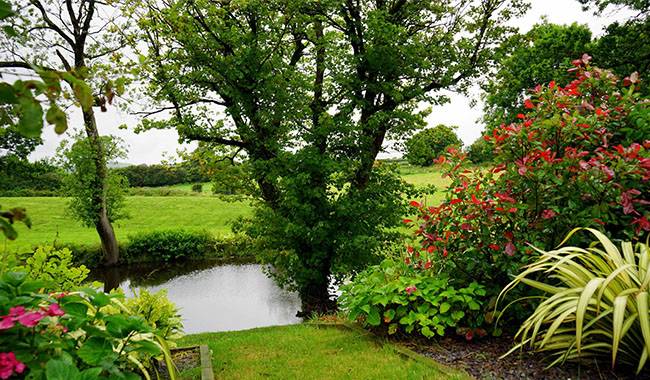
Planting in turf
This ridiculous mistake I not only made myself but also continue to observe on beginners. And it’s understandable – the flower is ready and wants to make it beautiful as soon as possible, and thorough soil preparation is not fast and time-consuming.
As a result, weeding was generally effective, and the roots of perennial weeds mostly stayed in the ground.
Later, it became more and more difficult to deal with the weeds, and the flower beds could not have a neat appearance. So for my own sake, I decided to postpone the rush so as not to complicate my life later.
If there is no physical opportunity to dig over the area under the bed and carefully pick out all the rhizomes by hand, then the corner of this garden can be covered with dense mulch (such as cardboard) for a season, and then most of the weeds themselves will die.
There is also a chemical method to remove unwanted vegetation, but you should not forget that herbicides are extremely harmful to soil microorganisms.
Unlimited flowerbeds
Professional designers pay great attention to the limited edges of flower beds. Big A gardeners, however, generally do not pay attention to it. As a result, over time, the surrounding vegetation begins to penetrate more and more into the flower bed, especially when the flower bed borders the lawn.
Today, there is a wide variety of edging strips. In this case, not only the appearance is important, but also the material of the product. In particular, if you plan to trim your flowerbeds with a trimmer, be sure to choose a tape that is resistant to this type of damage, which will definitely be indicated on the packaging.
Grow ornamental plants in an “everything-at-once” way
Not many garden beginners have extra space and want to fill it up quickly with plants. That’s when their neighbors come to their aid, happily sharing their stubs. Most donations are usually simple perennials that require little care.
But there is an inexhaustible appetite for flower growers, and each year we bring something new to the garden. Subsequently, space becomes increasingly scarce, and the gifted “old-timers” inevitably lose out on the novelty of breeding.
Moreover, unpretentious flowers are often aggressive, sow aggressively and have sprawling roots. Subsequently, they will inevitably have to be moved behind a fence or sent to the compost pile altogether.
To prevent this from happening, it is best to realize straight away that it is very difficult and actually unnecessary to fill the entire plot in one year.
When plants dictate the location, not vice versa.
The main motivation for buying a plant in the first place was the absolute desire to have a flower or shrub. I lost a lot of plants as a result – they did not take root in the location you choose for them (no consideration of habitat requirements).
Most often, it was trivial to plant hellebores in the shade because the sun had run out of free space, and conversely, to plant shade-tolerant plants in the sun.
With experience, I understood that the plant is not an inanimate internal object. And nothing good would come of such an approach.
Now, if I have an empty space on my plot, I first look at the conditions (sun or shade), and then – the environment. Based on this information, I choose a flower that will like the conditions and fit the design of this corner of the garden.
If possible, I try to buy several plants of the same species, because most flowers and ornamental shrubs look best in a group.
Plant precious plants next to your neighbor’s fence.
Even if your neighbors are friendly and accommodating people, it’s hard to predict how your relationship will develop over the years as you share a common fence. In the beginning, our new neighbors made the best impression on us.
Who would have guessed that these people would smile at us on weekends and methodically destroy all the fruit and ornamental trees and shrubs on weekdays (in our absence), even to some extent adjacent to their side of the fence?
The reason was prosaic – supposedly our plants were shading their potato beds. Of course, there are specifications for indentations when planting plants near a fence, and we planted seedlings according to the specifications, but the results were not enough.
Later, after the scandal came to light, the neighbors demanded that all trees and shrubs be planted strictly on the other side of the block (closer to other neighbors’ homes).
It is frustrating to remember how many interesting crops and precious species have been destroyed by unscrupulous neighbors. But plants are fragile creatures, so I watered them with boiling water, sprayed them with herbicide, and justified the name… …
Lack of variety labels
The importance of maintaining a variety of information on crops cannot be overemphasized. Almost every year we experiment with new vegetable and fruit crop varieties in the field, making sure to mark them on the variety label.
Unfortunately, in my case, it is often a frustrating situation when by mid-summer the bright labels on the plates are completely burned out and we don’t know which varieties have borne fruit.
It turns out that even if the labels are listed as waterproof, there is no guarantee that the labels are of high quality. In my large house, I used markers from many different manufacturers, some of which erased their writing in a few weeks, and some of which would not erase even with acetone.
Several times I burned to my own markers and began to like the simple pencil with the most common soft lettering, which I always used for the inscriptions on the plastic garden signs.
Flower beds under fruit trees
Gardeners often make this mistake because they have lots of tall fruit trees on their plots. Often it is not out of ignorance, but because there is no space. There is hardly any room to plant flowers, or if you want to make shady flower beds, there is no shade other than the mature fruit trees.
I have made this mistake many times, and each time I regret such a decision. I made my first shade flower bed at my parents’ cottage under an old apple tree. As a result, the biennial bombardment of ripe fruit turned my flower bed into a battlefield and seriously lost its decorative value.
The second time I planted a flower bed under a plum tree, but my in-laws inadvertently trampled the plant during harvest. The third flower bed was planted in my own shed under a cherry tree, but here I was not without faults, as the cherry shoots needed constant removal and maintenance was difficult.
Based on this unpleasant experience, I made a firm decision to plant only fruit trees, in addition to flowers!
Dear readers Despite the many mistakes, today our first villa is a carefully manicured and fragrant plot, so different from where the old owners went. When people ask me if I regret buying a villa that I had to sell after only 5 years, I reply that I do not regret it, it was a valuable experience. I believe my new garden will be better because we will create it with the mistakes of the past in mind.




